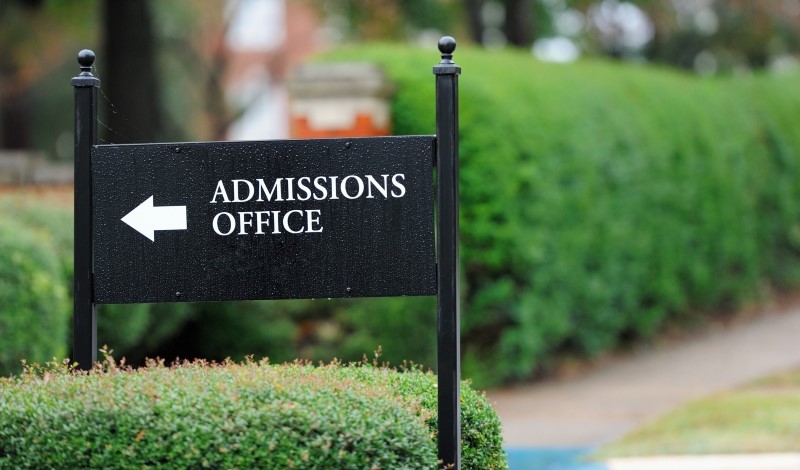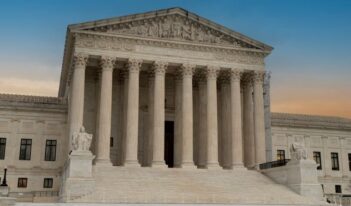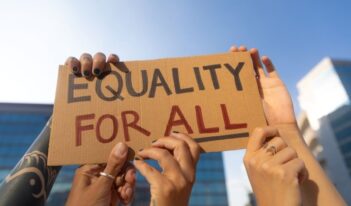
Scholars predict that colleges may continue affirmative action practices despite contrary Supreme Court decision.
A student “must be treated based on his or her experiences as an individual—not on the basis of race.” So wrote U.S. Supreme Court Chief Justice John Roberts last June in Students for Fair Admissions v. Harvard (SFFA), a case that functionally overturned decades of precedent permitting schools to consider race in college admissions.
But will SFFA stop schools from engaging in race-based affirmative action?
It may not, argue Guha Krishnamurthi, professor at the University of Maryland Francis King Carey School of Law, and Peter N. Salib, professor at the University of Houston Law Center, in a recent article.
Krishnamurthi and Salib assert that SFFA could have little practical effect on admissions policies because of other, older Supreme Court cases, such as Washington v. Davis and McCleskey v. Kemp. The Court held in these cases that only direct evidence of an intent to discriminate can establish a claim for unlawful discrimination. Under the Equal Protection Clause of the U.S. Constitution and Title VI of the Civil Rights Act, Krishnamurthi and Salib emphasize, plaintiffs must show more than a statistical overrepresentation in admitted students from any one racial group to prove discrimination. They contend that only schools that admit to engaging in affirmative action would be liable under existing precedent.
In SFFA, the Court held that the race-conscious admissions policies used by Harvard College and The University of North Carolina at Chapel Hill violated the Equal Protection Clause and Title VI. Although the Court stopped short of expressly overruling precedents that authorized race-conscious admissions policies, Krishnamurthi and Salib explain that both the majority and dissenting opinions “strongly suggest that the holding functionally accomplishes exactly that.”
The decision’s critics assert that SFFA will spell the end of affirmative action and undermine racial equality in education. Krishnamurthi and Salib, however, predict that SFFA is unlikely to eliminate—or even decrease—the use of race-conscious admissions programs.
Although after SFFA affirmative action is now illegal, the decision permits schools to admit students according to what Krishnamurthi and Salib call “multifactorial, discretionary, and ultimately obscure criteria.” In addition, schools may still invite an applicant to discuss how “race affected his or her life, be it through discrimination, inspiration, or otherwise.” Indeed, Harvard has announced plans to do exactly that, Krishnamurthi and Salib point out.
Despite the Court’s insistence that schools may not use application essays to circumvent SFFA’s ruling, furthermore, Krishnamurthi and Salib predict that schools that engage in affirmative action in this way may avoid liability. Krishnamurthi and Salib explain that because admissions decisions are based on holistic assessments of applicants, schools easily can obscure the use of race in a particular admissions decision. In fact, Krishnamurthi and Salib note that the multi-year SFFA litigation failed to uncover that schools made any individual admissions decision on the basis of race.
Although Krishnamurthi and Salib concede that statistical evidence may demonstrate that a school has systemically used affirmative action, they assert that any such demonstration is legally irrelevant.
Under Davis and McCleskey, Krishnamurthi and Salib explain, statistical evidence that a challenged practice resulted in a racially disparate impact alone cannot establish a violation of the Equal Protection Clause. A plaintiff alleging such a violation must provide direct evidence of an intent to discriminate.
In Davis, two Black applicants to the Metropolitan Police Department of the District of Columbia alleged that the Department’s application exam was racially discriminatory because four times as many Black applicants failed the verbal exam as did white applicants. The Court held that evidence of a racially disparate impact could not on its own establish a constitutional violation, Krishnamurthi and Salib explained. Rather, the plaintiffs needed to demonstrate that the Department had acted with an intent to discriminate.
In McCleskey, the Court rejected a Black death row inmate’s claim that statistical evidence demonstrated that Black defendants were sentenced to death more frequently than white defendants. Krishnamurthi and Salib note that the Court in McCleskey reinforced Davis by holding that a party alleging an equal protection violation must demonstrate that “the decision-makers … acted with discriminatory purpose.” The Court also emphasized that statistical evidence alone cannot support an inference that the decision-makers in a particular case acted with discriminatory purpose.
Krishnamurthi and Salib describe how later cases have applied the same principles announced in Davis and McCleskey to Title VI of the Civil Rights Act, which prohibits racial discrimination by any program or activity receiving federal funding and, unlike the Equal Protection Clause, applies to private schools. Accordingly, a plaintiff alleging that a school’s admissions policy violates Title VI must provide “direct proof of discriminatory intent,” just as if they were alleging a violation of the Equal Protection Clause, Krishnamurthi and Salib clarify.
Krishnamurthi and Salib note that progressives have long condemned Davis and McCleskey as roadblocks to racial equality—precedents that have allowed government officials to carry out systemic racial discrimination.
But Krishnamurthi and Salib contend that SFFA has turned the tables. They predict that even though Davis and McCleskey may have been once “a thorn in the side of progressive impact litigators,” the cases may soon “be a curse on conservative opponents of affirmative action” by opening the door broadly to legal challenges of racially unequal programs, including traditionally progressive targets like criminal punishment.



